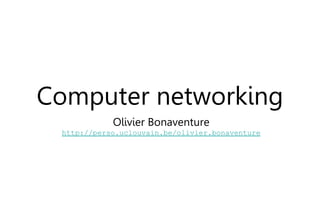This document provides an overview of a computer networking course. The course will cover two main parts: host behavior and building a network. It will describe the principles and protocols of the Internet including HTTP, TCP, IP, and Ethernet. Students will learn through reading, exercises, and discussions with teaching assistants. Evaluation includes a group project, videoconferencing analysis, peer reviews, quizzes, and a written exam.















































































































